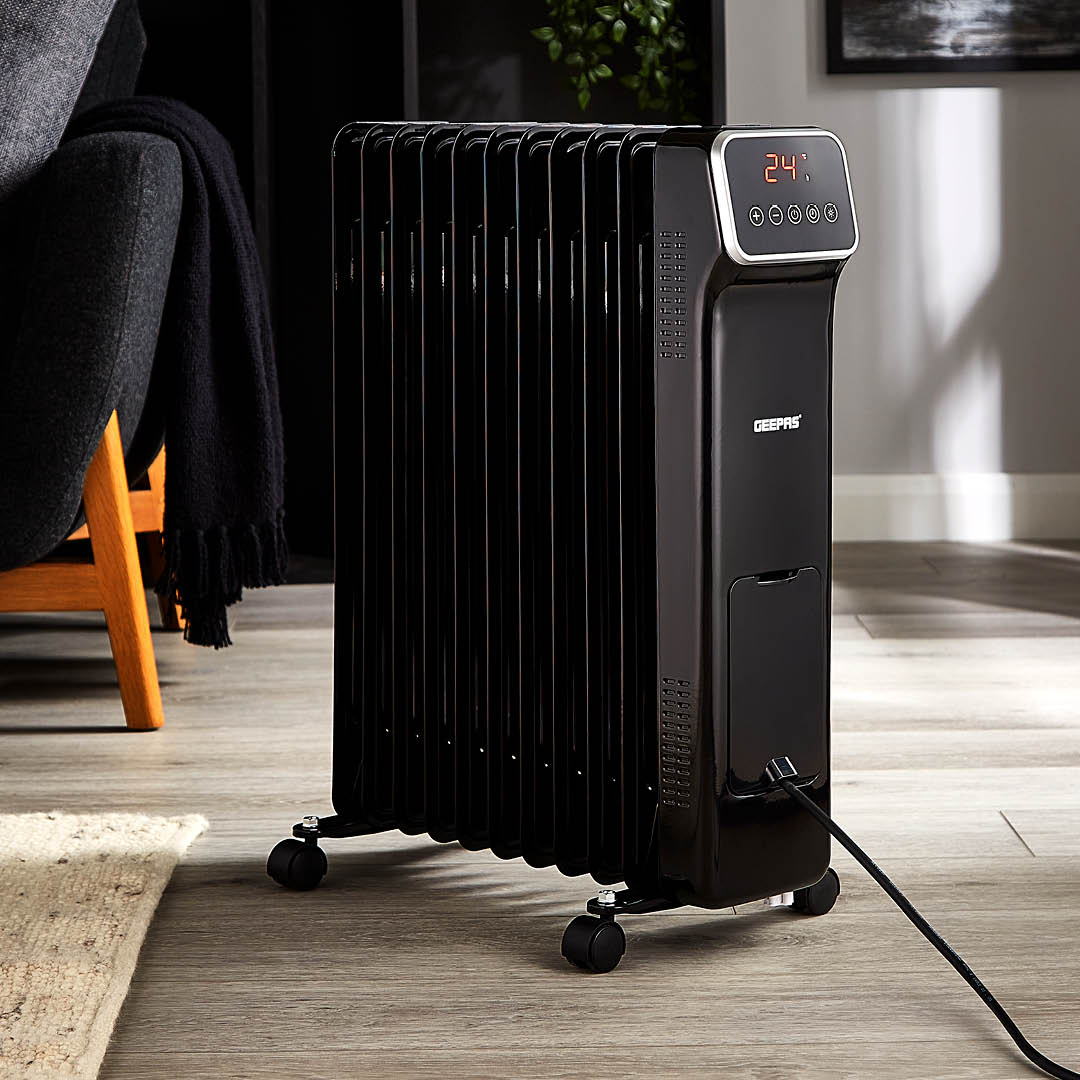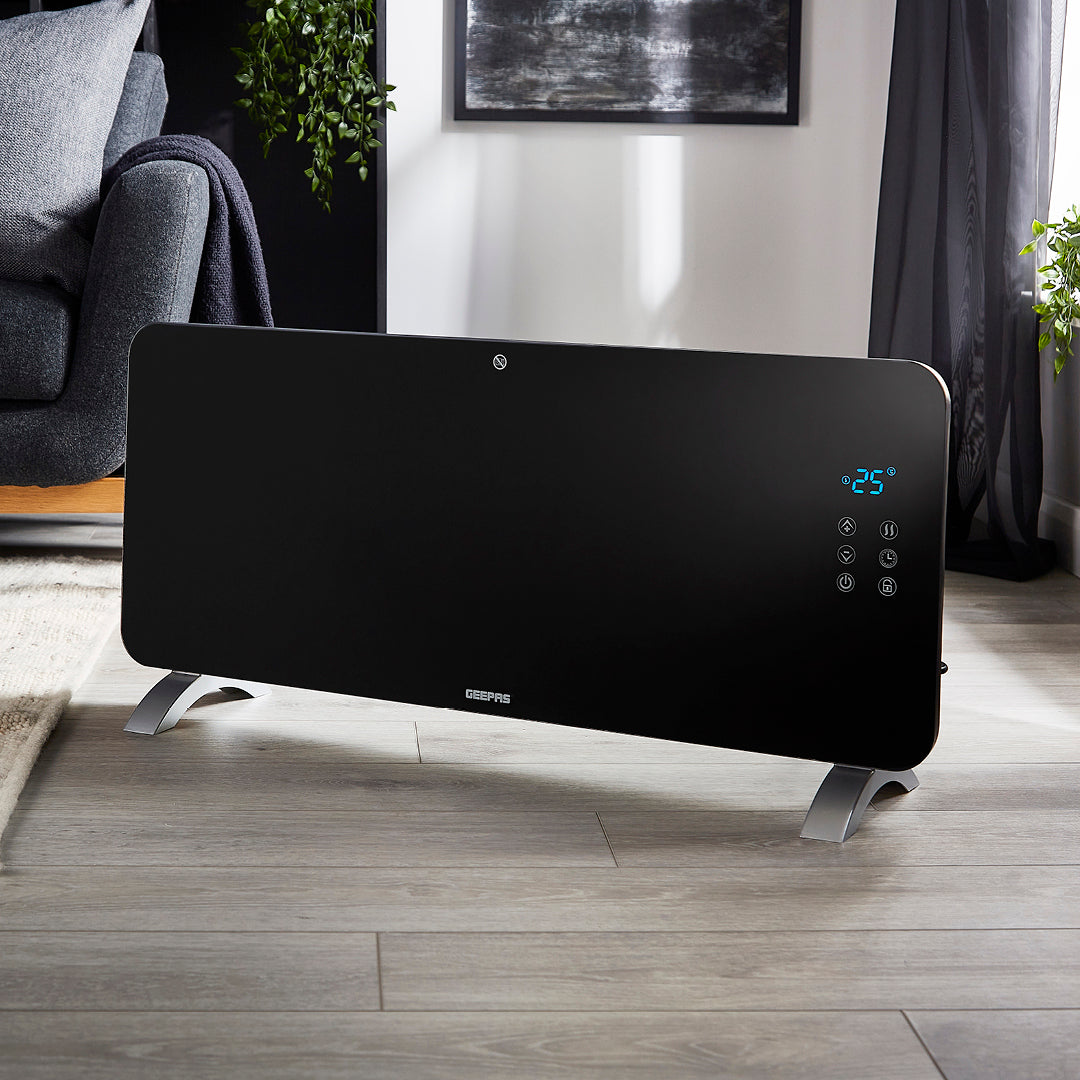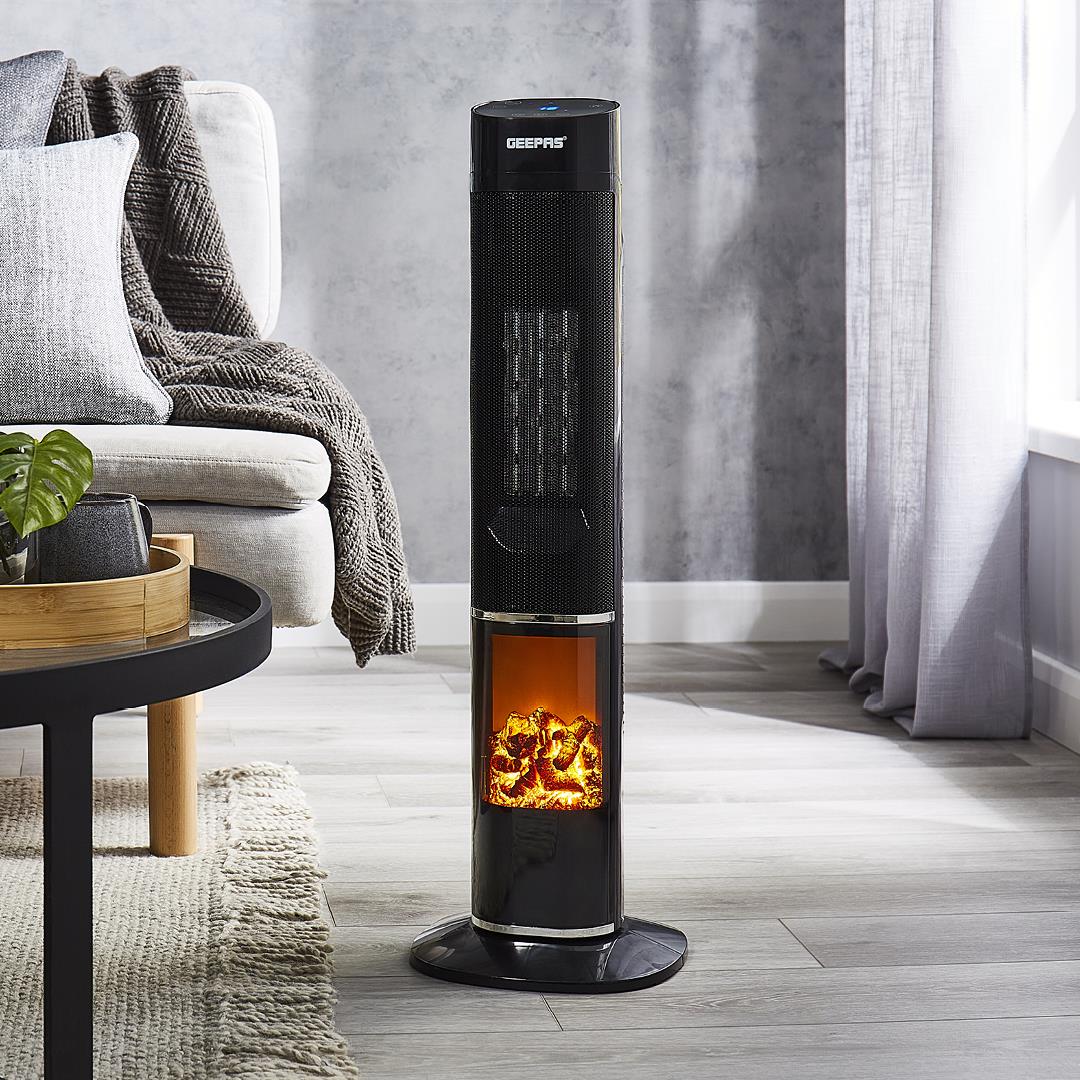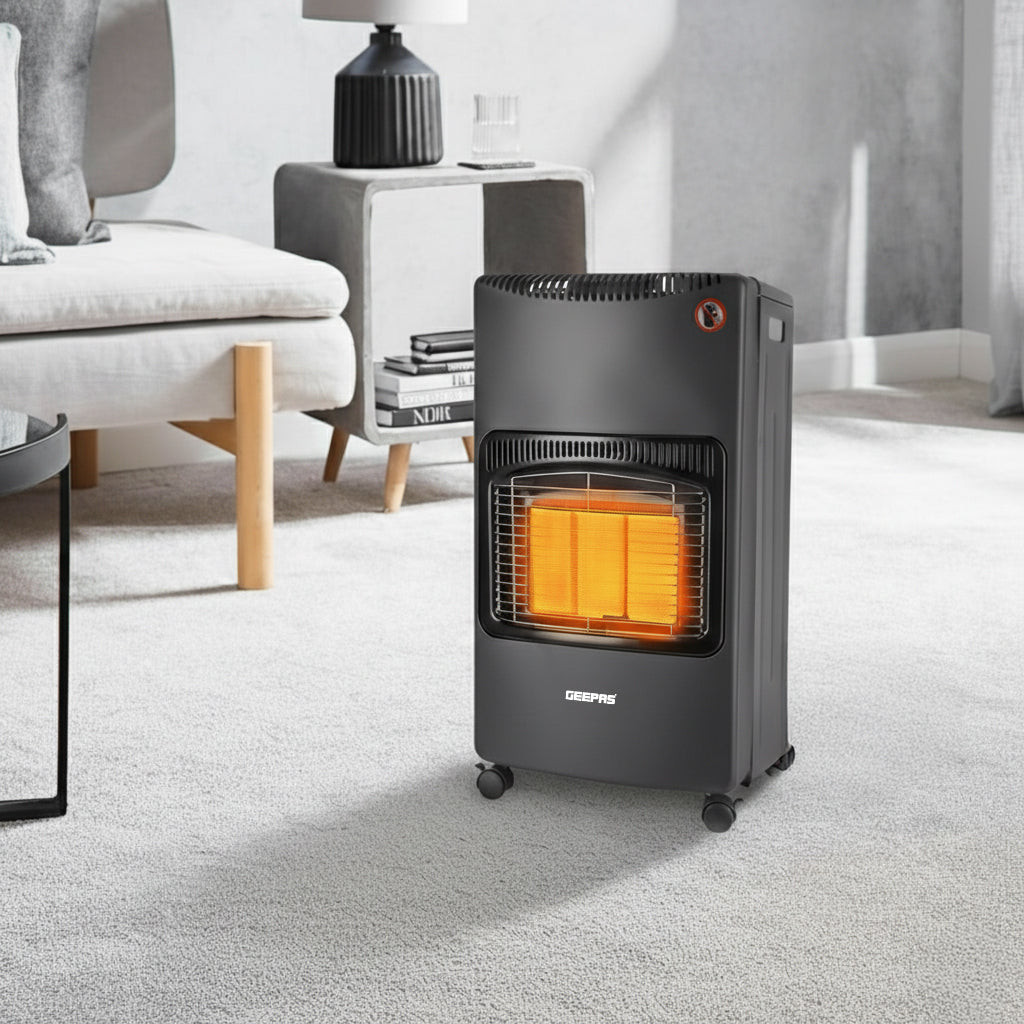As the chill of winter truly bites across the UK, finding the right heating solutions for your home becomes paramount. With fluctuating energy costs, everyone is looking for efficient, effective, and affordable ways to stay warm.
While central heating is essential, electric heaters and portable heaters offer a flexible, energy-efficient way to provide supplementary or zone heating, allowing you to warm only the spaces you're using and potentially reduce your overall heating costs.
But with so many types available, how do you choose the best heater for winter that meets your specific needs? This comprehensive guide will walk you through the various electric heater types, their benefits, crucial features, and help you select the ideal winter warmer for any room in your home.
Why Choose Supplementary Electric Heating For Winter?
Investing in a good electric heater can offer numerous advantages:
- Targeted Warmth: Instead of heating your entire home, portable heaters allow for zone heating, meaning you only warm the rooms you're actively using. This is particularly energy-efficient for home offices, bedrooms, or living spaces.
- Cost-Effective Comfort: While electricity costs more than gas per unit, targeted heating can sometimes be cheaper than constantly running your entire central heating system, leading to lower running costs and energy savings.
- Flexibility & Portability: Most electric heaters are portable, easily moved from room to room, offering warmth precisely where you need it.
- Instant Heat: Many electric heaters provide rapid warmth, quickly taking the chill out of a cold room.
- Easy Installation: Simply plug in and go! No complex installation or plumbing required.
Understanding Heater Types: Which Is The Best Electric Heater For You?
Not all electric heaters are created equal. Each type offers distinct advantages for different spaces and heating preferences.
How They Work: These heaters use an internal reservoir of diathermic oil that heats up, retaining warmth for a long time. They radiate a gentle, consistent heat.
Pros: Highly energy-efficient due to excellent heat retention, provides sustained and quiet warmth, ideal for bedrooms and living rooms where constant heat is desired. Often feature thermostats and timers.
Cons: Slower to heat up initially compared to fan heaters.
Best For: Bedroom heaters, living room heaters, extended use, sustained warmth.
2. Convection Heaters (Convector Heaters):
How They Work: These electric heaters draw in cool air, heat it over an element, and release it upwards, circulating warm air throughout the room.
Pros: Quick to heat up, provides even heat distribution, generally silent in operation, slimline designs are often suitable for wall mounting.
Cons: Can be less efficient at retaining heat than oil-filled radiators; warmth can be lost quickly in draughty rooms.
Best For: General room heating, quick warmth in medium-sized spaces.
3. Fan Heaters:
How They Work: A heating element combined with a fan rapidly blows warm air into the room.
Pros: Provide instant heat, highly portable, excellent for a quick burst of warmth. Often very compact.
Cons: Can be noisy, high running costs if used for long periods, primarily heat a limited area.
Best For: Small room heaters, desk heaters, personal heating, and quick warmth in a home office or workshop.
4. Ceramic Heaters:
How They Work: Similar to fan heaters, but they use ceramic heating elements, which are more efficient at generating and regulating heat.
Pros: Fast heat-up, energy-efficient for their size, self-regulating (ceramic elements prevent overheating), safe heaters with often cool-touch exteriors. Many are portable.
Cons: Best for personal or small room heaters, not ideal for whole-room heating in large spaces.
Best for: Small room heaters, home office heaters, and excellent personal heaters with enhanced safety.
5. Infrared Heaters (Radiant Heaters/Halogen Heaters):
How They Work: These heaters emit infrared radiation, directly heating objects and people in their path, similar to how the sun warms you. They don't heat the air around them directly.
Pros: Provide instant heat, highly energy-efficient for targeted heating, good for draughty areas like garages or conservatories, as heat isn't lost to air movement.
Cons: Only heat what's directly in front of them; the air temperature won't rise significantly.
Best For: Conservatory heaters, outdoor spaces (patio heaters), workshops, spot heating.
6. Panel Heaters:
How They Work: Often slim and wall-mountable, panel heaters combine convection with some radiant heat to provide gentle, consistent background warmth.
Pros: Discreet design, silent operation, good for background heating in bedrooms or hallways. Many are smart heaters with Wi-Fi controls.
Cons: Less intense heat than other types; can be less effective as a primary heat source in very cold rooms.
Best For: Bedroom heaters, hallways, living room heaters, supplemental background heat.
Shop The Geepas Electric Heater Collection
Essential Features To Look For In Your Winter Heater:
To ensure you choose the best heater for winter, consider these key features:
- Adjustable Thermostat: Crucial for energy efficiency. A heater with a thermostat will maintain a set temperature, switching off automatically when the room reaches it, saving electricity.
- Timer Functions: Program your heater to switch on/off at specific times, ensuring warmth when you need it and saving energy when you don't.
- Safety Features: Prioritise safe heaters! Look for tip-over protection (automatically shuts off if knocked over), overheat protection (shuts off if it gets too hot), and a cool-touch exterior, especially vital for homes with children or pets.
- Multiple Heat Settings: Allows you to adjust the power output for optimal comfort and energy saving.
- Portability: Wheels or carry handles make moving your portable heater effortless.
- Noise Level: Crucial for bedroom heaters or office heaters; look for models marketed as quiet heaters.
- Smart Features(Wi-Fi/App Control): For ultimate convenience, smart heaters allow you to control settings remotely via your smartphone or voice assistant (e.g., Alexa, Google Home), enabling precise zone heating and energy management.
Choosing The Best Heater For Each Room In Your Home:
For Bedrooms: A quiet oil-filled radiator or a silent panel heater with a thermostat and timer is ideal for maintaining a consistent, peaceful warmth through the night.
For Living Rooms: A larger oil-filled radiator or a convection heater can provide ample whole-room heating. Consider models with higher wattage for larger spaces.
For Bathrooms: Opt for a splash-proof (IP-rated) ceramic heater that provides quick, personal warmth to keep you comfortable and productive.
For Home Offices: A compact fan heater or convertor heater provides quick, personal warmth to keep you comfortable and productive.
For Conservatories/Garages: An infrared heater or gas heater is often the most effective choice here, as it heats objects directly, making it suitable for often draughty or less insulated spaces.
Maximise Your Winter Comfort & Energy Savings:
Beyond choosing the best heater for your space, remember these tips to keep your heating costs down:
- Insulate: Ensure your home is well-insulated and draught-proofed.
- Zone Heat: Use your electric heaters only in occupied rooms.
- Use Thermostats & Timers: Don't waste energy heating an empty or already warm room.
- Layer Up: A jumper and blanket can go a long way before turning up the heat.
Don't let the UK winter catch you off guard. Explore our extensive collection of electric heaters today and find the best heater for winter to keep your home warm, comfortable, and energy-efficient.
Your Heating FAQs Answered: Stay Warm This UK Winter
Choosing the best heater for winter in your home means understanding your options. Here are some of the most common questions about electric heaters and winter heating solutions to help you make an informed decision.
1. What Is The Most Energy-Efficient Type Of Electric Heater For Winter?
All electric heaters convert electricity to heat at nearly 100% efficiency. However, in terms of running costs and how effectively they retain and distribute heat for prolonged periods, oil-filled radiators and panel heaters with accurate thermostats and timer functions are often considered among the most energy-efficient electric heaters for sustained warmth. They maintain temperature well without constantly drawing maximum power, helping you reduce your overall heating costs in your UK home.
2. Are Electric Heaters Safe To Leave On Overnight or Unattended?
Modern electric heaters are built with multiple safety features. Look for heaters with tip-over protection (automatically shuts off if knocked over) and overheat protection (turns off if it gets too hot). While these features enhance safety, it's generally recommended to use timers for overnight heating and always ensure adequate clearance around the heater. Never leave a portable heater unattended for extended periods, especially near flammable materials, for maximum safety in your home.
3. How Do I Calculate The Running Cost Of An Electric Heater?
To estimate the running cost of an electric heater, you need its wattage (power consumption) and your electricity tariff.
Formula: (heater wattage/1000) x hours used x cost per kWh (£).
For example, a 2000W (2kW) heater running for 5 hours at a typical UK tariff of £0.30 per kWh would cost: (2000/1000) x 5 x 0.30 = £3.00. This calculation helps you choose more cost-effective heating solutions.
4. Can Electric Heaters Replace Central Heating In A Whole House?
Generally, electric heaters are designed for supplementary heating or zone heating, meaning they're best for warming specific rooms you're using. While it's possible to use multiple electric heaters as a primary source, it's typically less energy-efficient and more expensive than a well-maintained central heating system for whole-house heating. They excel at providing targeted warmth in cold spots or individual rooms, like a home office heater or a bedroom heater.
5. What Size Heater Do I Need For My Room?
The size of the heater (measured in wattage or BTU for some types) should match your room size. As a general rule, use the following:
- Small rooms (up to 10m²): 800W - 1500W (desk heaters, small ceramic heaters).
- Medium rooms ( 10-20m²): 1500W - 2000W (oil-filled radiators, convection heaters).
- Large rooms (20m²): 2000W+ (large oil-filled radiators, powerful convector heaters). Consider factors like insulation and draughts, which can affect effectiveness.
6. Do Electric Heaters Dry Out The Air?
Many electric heaters, especially fan heaters and convection heaters that actively circulate warm air, can reduce humidity levels, making the air feel drier. Oil-filled radiators and panel heaters tend to cause less air dryness as they provide more radiant or gentle convection heat. If dryness is a concern, you might consider using a small humidifier alongside your winter heater.
7. Can I Use An Electric Heater In A Bathroom?
Only use electric heaters specifically rated for bathroom use. These will have an IP rating (ingress protection rating) that indicates their resistance to water splashes. Always check the manufacturer's instructions and ensure correct installation away from direct from direct water sources. For bathroom use, ceramic heaters or wall-mounted fan heaters with appropriate IP ratings are often recommended for their fast, targeted warmth.






